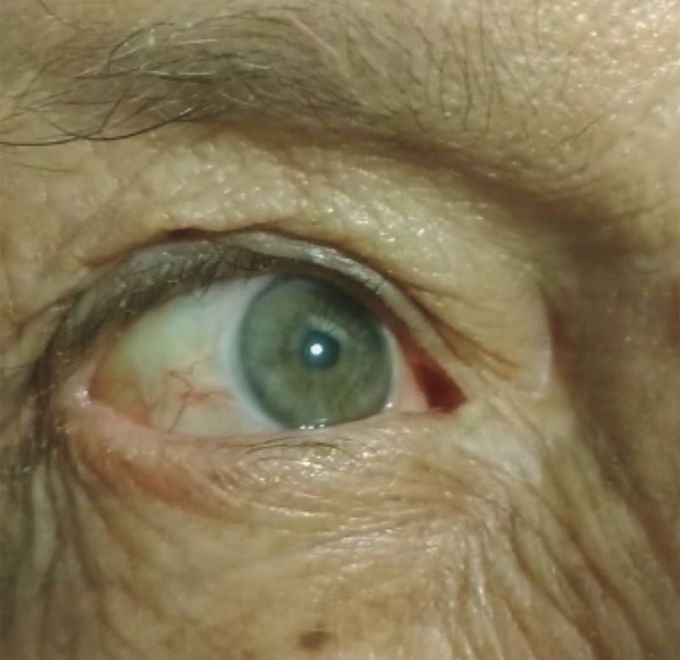


Landolfi’s Sign
A 73-year-old man with hypertension presented to the emergency department with a 1-week history of progressive shortness of breath. On physical examination, the blood pressure was 145/54 mm Hg, the heart rate 113 beats per minute, the respiratory rate 32 breaths per minute, and the oxygen saturation 92% while the patient was receiving 2 liters of oxygen per minute by nasal cannula. The cardiac examination was notable for a crescendo–decrescendo systolic murmur and a decrescendo diastolic murmur. The ophthalmologic examination revealed dilation and constriction of the pupils, synchronized with the patient’s heartbeat (see video). Known as Landolfi’s sign, this finding may be seen in patients with severe aortic regurgitation and is a manifestation of wide pulse pressure and large stroke volume in the iridial vessels, which causes systolic constriction and diastolic dilation of the pupils. Transthoracic echocardiography revealed severe aortic regurgitation with dilatation of the ascending aorta and a dissection flap. Computed tomographic scans of the aorta showed a Stanford type A aortic dissection. The patient underwent replacement of his ascending aorta and aortic valve (Bentall procedure). On discharge 10 days later, Landolfi’s sign was no longer present.
Video link . https://youtu.be/EL6SwVIvBNQ

